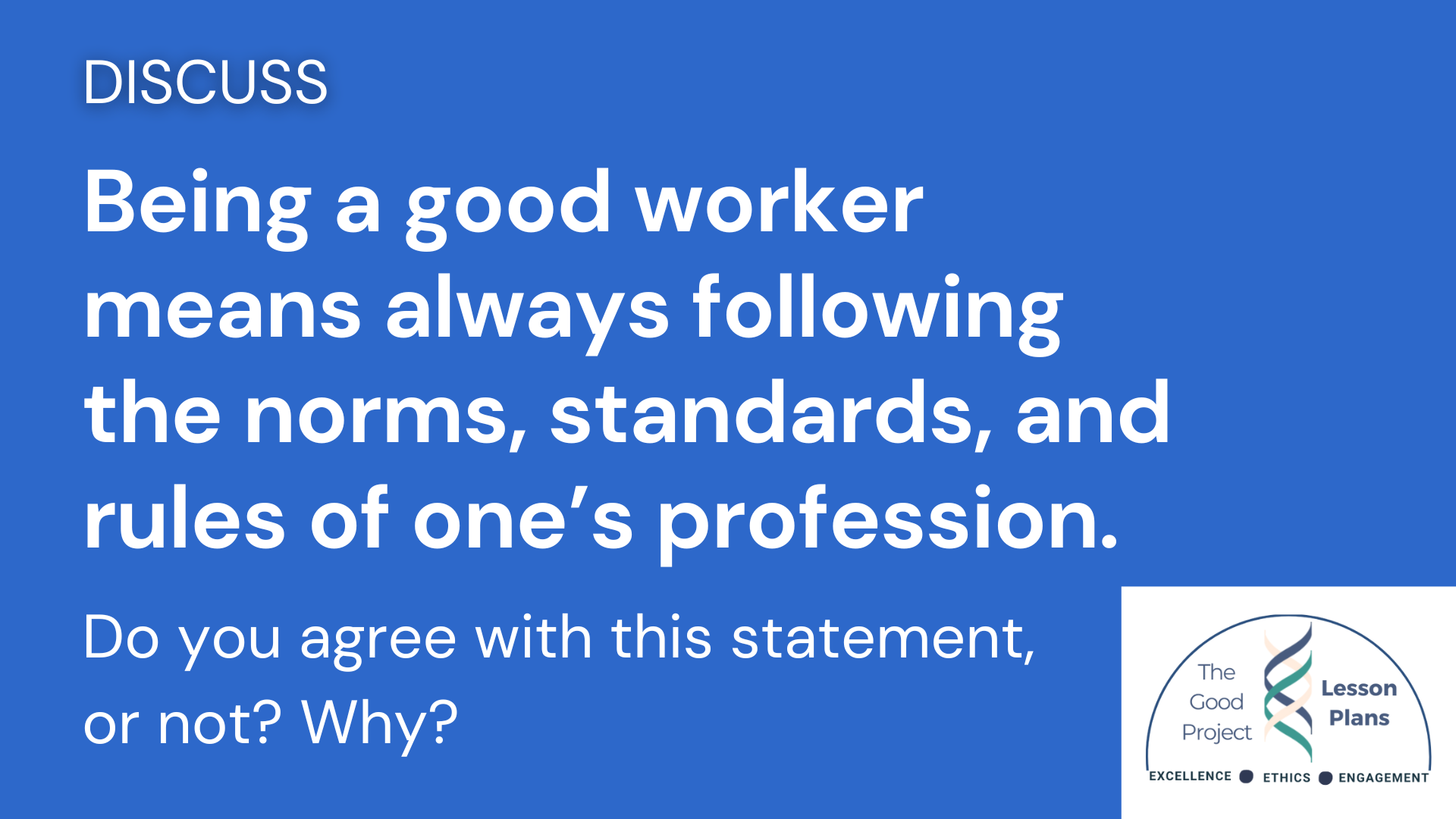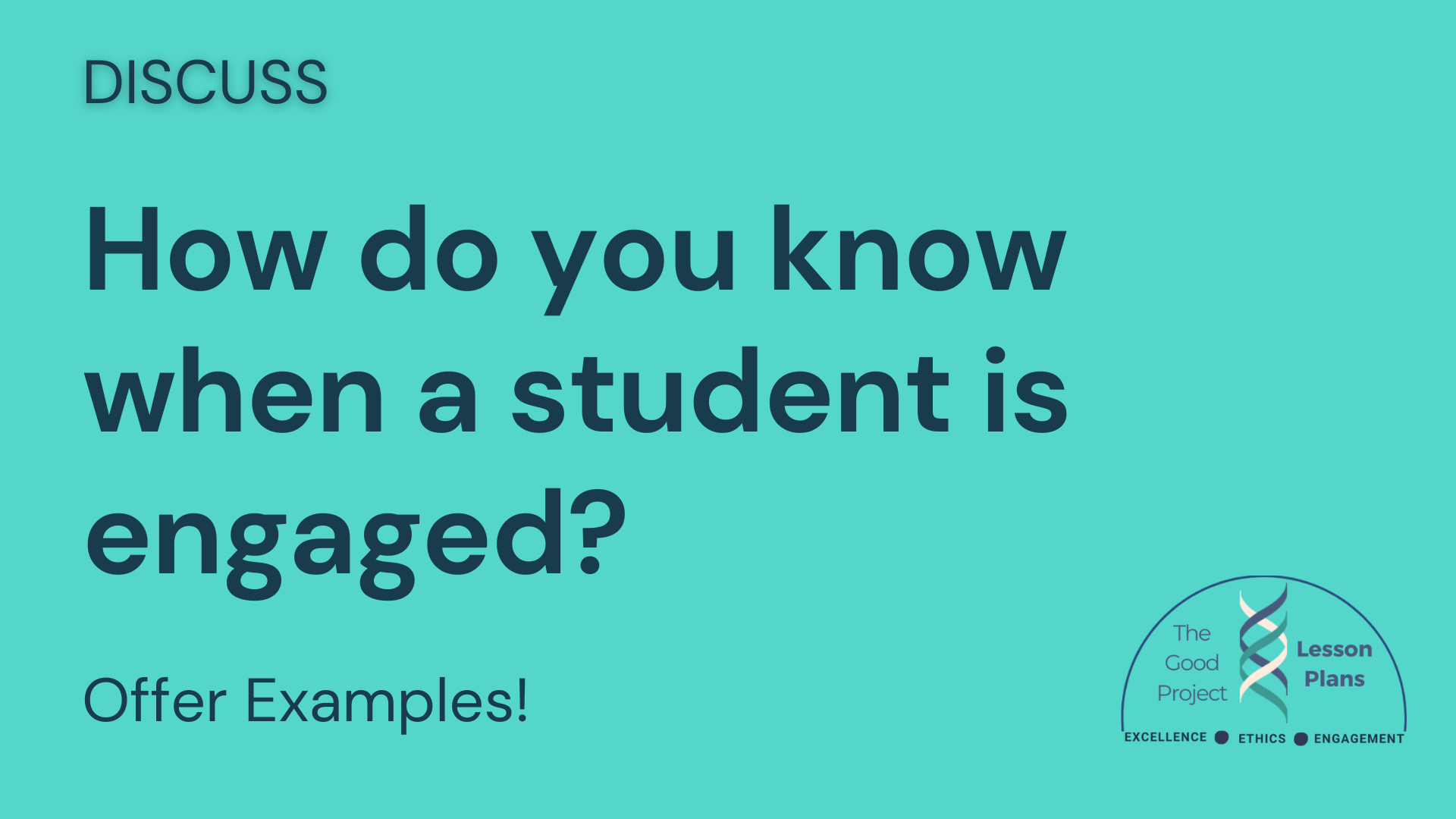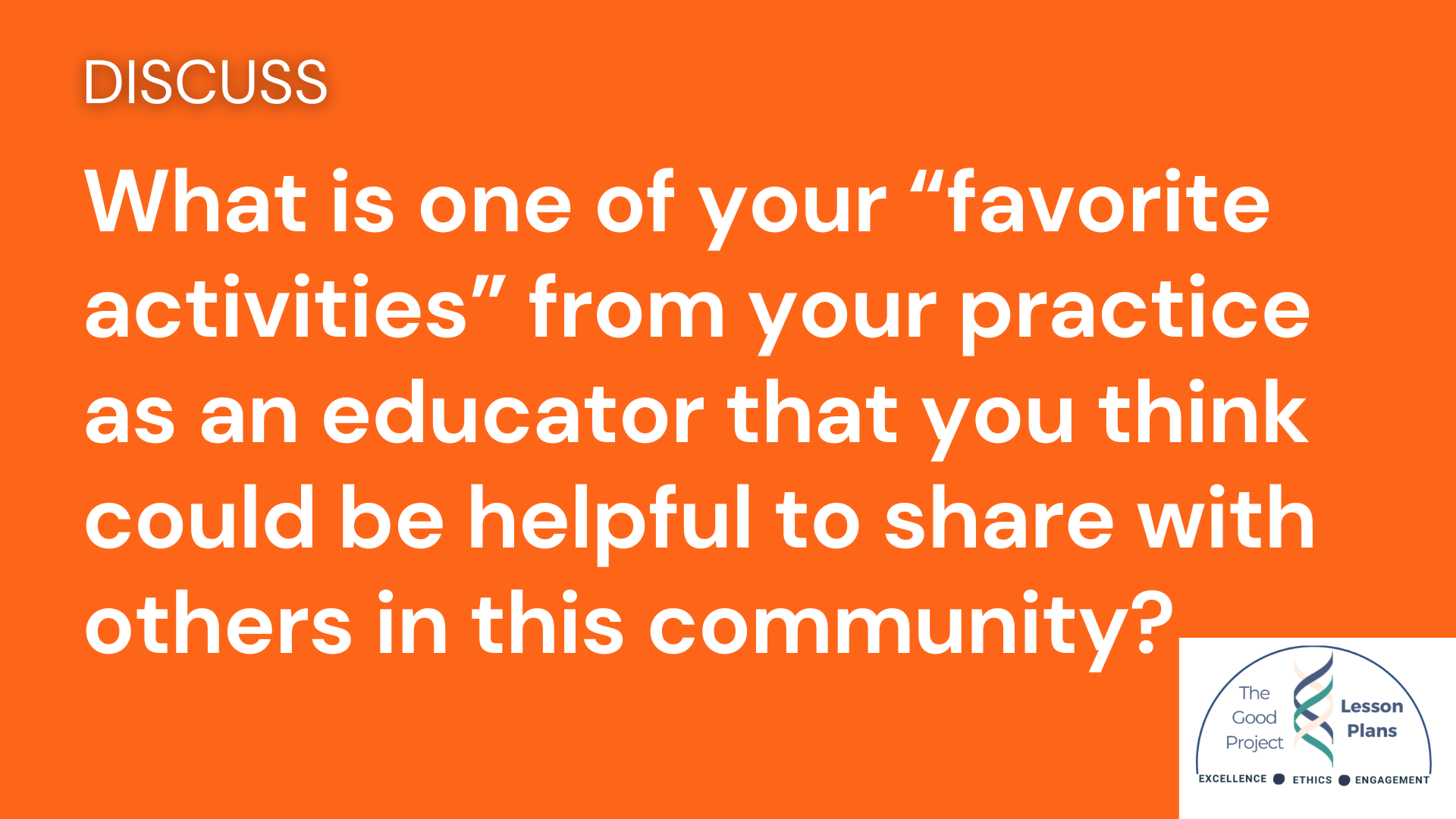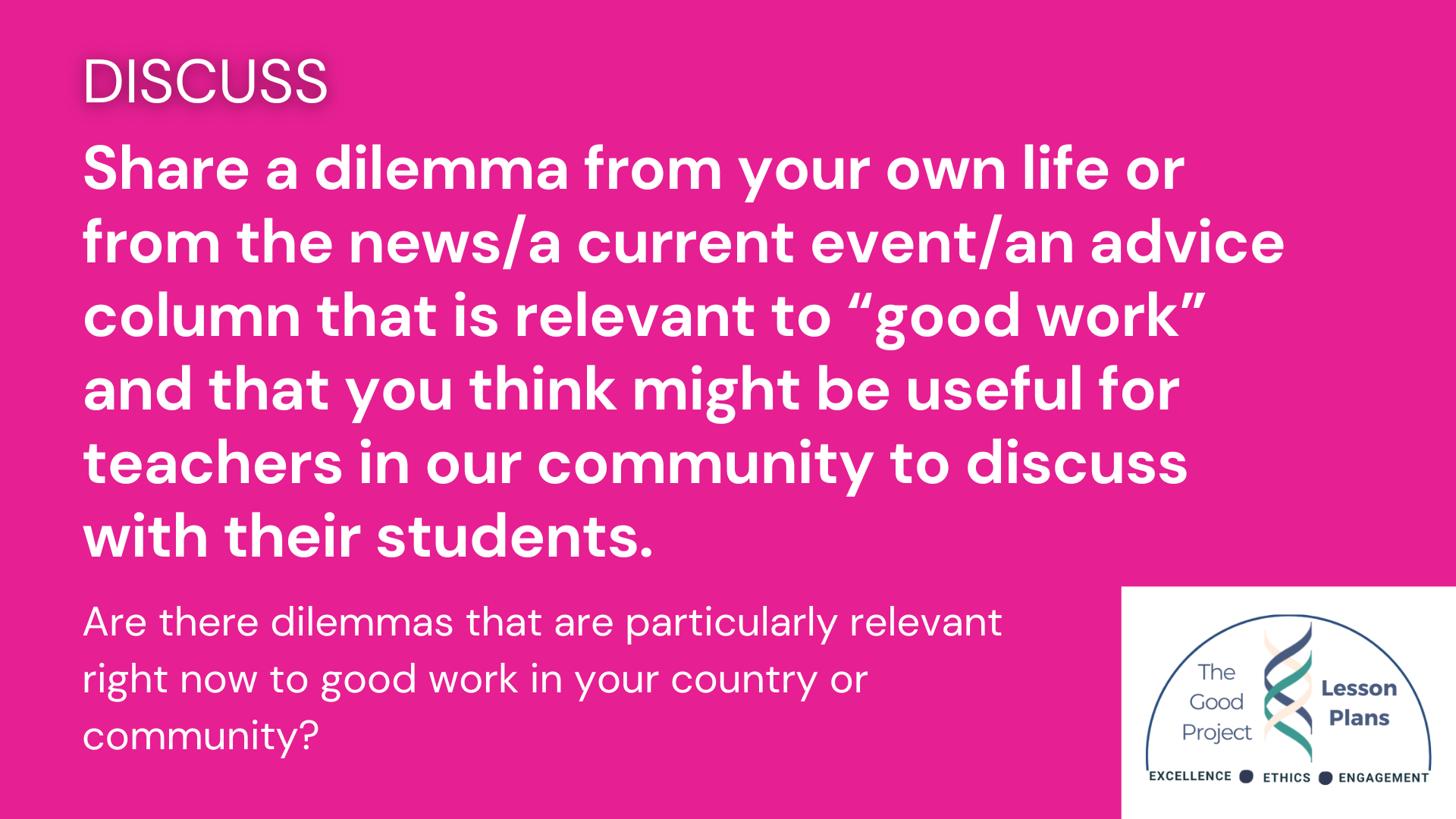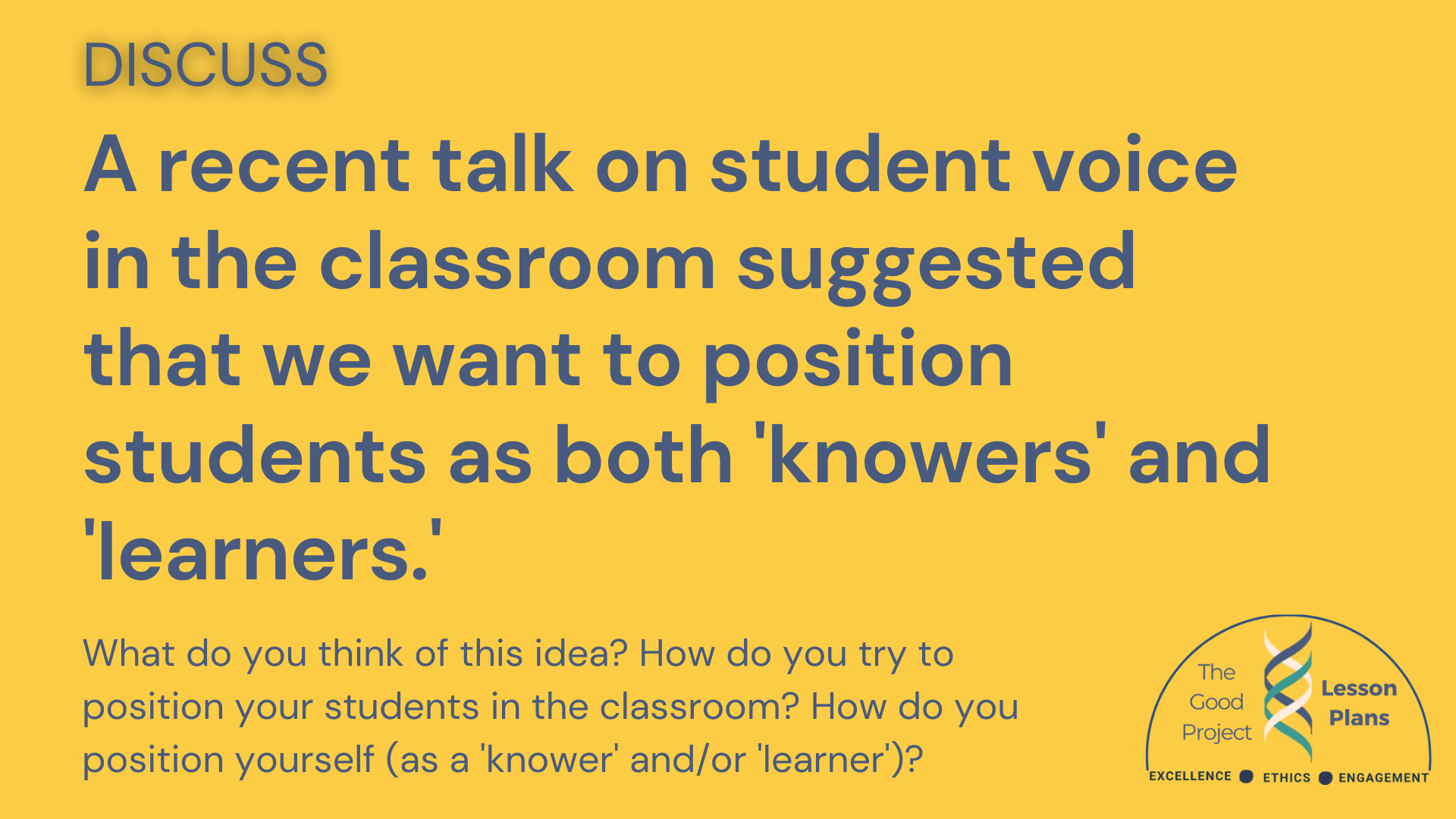Community of Practice Resources
Since July 2022, The Good Project has coordinated a Community of Practice involving educators from around the world who are interested in discussing “good work” with their students. To date, over 100 educators have joined the group, several dozen of whom are participating in a study funded by The John Templeton Foundation by teaching our lesson plans to their students during the course of 1-2 academic years.
We are sharing below a set of resources generated by our engagement with the Community of Practice, including:
Discussion Prompts
Videos (including How-To Guides and Lesson Plan Walkthroughs)
Lesson Plan Supplements
Additional content will be added to this page as it becomes available.
Join US!
If you are a researcher or community of practice organizer, you may also find these resources helpful. We would love to hear about your experiences via our contact page.
If you are an educator who is interested in joining our Community of Practice, please visit thegoodproject.org/study-details to apply.
Discussion Prompts
Each month, our community members discuss one thought-provoking monthly prompt with one another, available on the following slides.
Teachers may wish to use these prompts with students, or other community of practice organizers or researchers may take inspiration from them.
Videos
We have created videos to show others how to use our materials, step-by-step. We have produced an overview of each of our lesson plans, with recommendations for educators, and an explanation of how to use our value sort activity to track the values of a class or organization.
LESSON PLAN WALKTHROUGHS
Video How-To guides
Lesson plan Supplements
To complement existing materials in our lesson plans, supplemental activities have been released for teachers to use in their classrooms.
Assessing your Class’s Values
Use this PDF to find out your class’s aggregate most important and least important values, without a computer.


